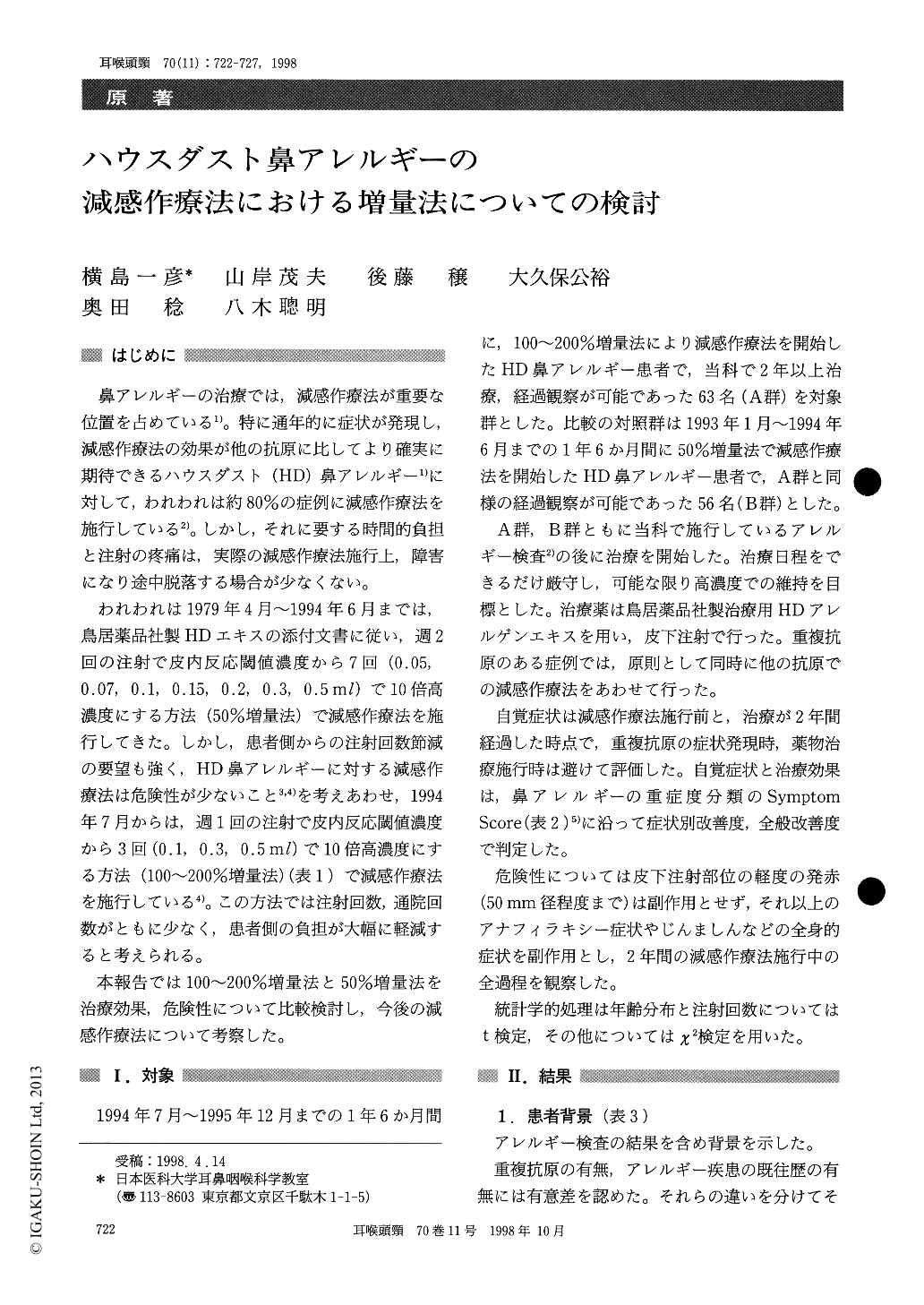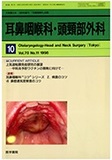Japanese
English
- 有料閲覧
- Abstract 文献概要
- 1ページ目 Look Inside
はじめに
鼻アレルギーの治療では,減感作療法が重要な位置を占めている1)。特に通年的に症状が発現し,減感作療法の効果が他の抗原に比してより確実に期待できるハウスダスト(HD)鼻アレルギー1)に対して,われわれは約80%の症例に減感作療法を施行している2)。しかし,それに要する時間的負担と注射の疼痛は,実際の減感作療法施行上,障害になり途中脱落する場合が少なくない。
われわれは1979年4月〜1994年6月までは,鳥居薬品社製HDエキスの添付文書に従い,週2回の注射で皮内反応閾値濃度から7回(0.05,0.07,0.1,0.15,0.2,0.3,0.5ml)で10倍高濃度にする方法(50%増量法)で減感作療法を施行してきた。しかし,患者側からの注射回数節減の要望も強く,HD鼻アレルギーに対する減感作療法は危険性が少ないこと3,4)を考えあわせ,1994年7月からは,週1回の注射で皮内反応閾値濃度から3回(0.1,0.3,0.5ml)で10倍高濃度にする方法(100〜200%増量法)(表1)で減感作療法を施行している4)。この方法では注射回数,通院回数がともに少なく,患者側の負担が大幅に軽減すると考えられる。
本報告では100〜200%増量法と50%増量法を治療効果,危険性について比較検討し,今後の減感作療法について考察した。
Immunotherapy is one of the most effective modes of therapy in house dust mite nasal allergy. However, frequent injections are often troublesome.
We evaluatd 63 patients treated with a new step up protocol immunotherapy compared with 56 patients who were treated with the standard proto-col. No significant differences were noted between the two groups in the number of sneezes, number of nose blowing and the grade of nasal obstruction. There were no severe side effects during the course of treatment by this protocol. These results indicate that the new step up protocol of immunotherapy is valuable.

Copyright © 1998, Igaku-Shoin Ltd. All rights reserved.


